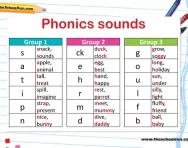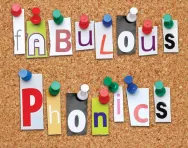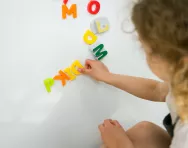Important update from TheSchoolRun
For the past 13 years, TheSchoolRun has been run by a small team of mums working from home, dedicated to providing quality educational resources to primary school parents. Unfortunately, rising supplier costs and falling revenue have made it impossible for us to continue operating, and we’ve had to make the difficult decision to close. The good news: We’ve arranged for another educational provider to take over many of our resources. These will be hosted on a new portal, where the content will be updated and expanded to support your child’s learning.
What this means for subscribers:
- Your subscription is still active, and for now, you can keep using the website as normal — just log in with your usual details to access all our articles and resources*.
- In a few months, all resources will move to the new portal. You’ll continue to have access there until your subscription ends. We’ll send you full details nearer the time.
- As a thank you for your support, we’ll also be sending you 16 primary school eBooks (worth £108.84) to download and keep.
A few changes to be aware of:
- The Learning Journey weekly email has ended, but your child’s plan will still be updated on your dashboard each Monday. Just log in to see the recommended worksheets.
- The 11+ weekly emails have now ended. We sent you all the remaining emails in the series at the end of March — please check your inbox (and spam folder) if you haven’t seen them. You can also follow the full programme here: 11+ Learning Journey.
If you have any questions, please contact us at [email protected]. Thank you for being part of our journey it’s been a privilege to support your family’s learning.
*If you need to reset your password, it will still work as usual. Please check your spam folder if the reset email doesn’t appear in your inbox.
10 ways to boost phonics confidence

Worried that your five or six year old is way too young to be tested at school? Don’t be!
The Year 1 Phonics Screening Check was designed to identify which pupils need additional support with certain areas of decoding phonics as they progress. Teachers are assessing pupils on a daily basis – it’s part of the job! This test is simply a formalised extension of this, and it’s really nothing to be concerned about. That said, a little focus on phonics at home will help your child recall the strategies they already know, and boost their confidence so they feel fully prepared.
Check their phonics progress
How is your child doing with their phonics? Working through reading books with them will have given you a good idea, but check on single words. The test will include:
- CVC (consonant vowel consonant) words – e.g. bin
- CCVC (consonant consonant vowel consonant) words – e.g. thin
- CVVC (consonant vowel vowel consonant) words – e.g. boat
- split digraphs – e.g. made or like
- tricky / exception words – e.g. friend
- longer words – e.g. words with ‘ing’ endings.
Write down some words and simply ask them to read them out to you. You may notice a pattern of where they’re getting stuck.
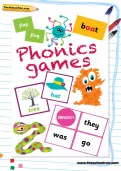
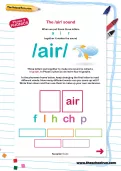
Your complete 'at-home' phonics support kit
- Step-by-step phonics programme
- Your guide to phonics
- Worksheets & games
It’s good to talk
It can be a good idea to tell your child that there’s going to be a little test at school, just so they don’t feel anxious when the time comes. Make sure they know that the Check is nothing to worry about, it’s just so the teacher can see how they’re doing and it doesn’t matter if they get stuck (we all do from time to time!).
Be prepared for odd creatures!
Nonsense words (or ‘pseudo words’) will feature in the Check (for example, ‘bim’ and ‘tox’), to see whether children can apply phonics rules correctly. In the test these words may be accompanied by a picture of an imaginary creature, to suggest that the word is the name of the creature featured. Why not make the most of the opportunity and ask your child to draw pictures of new species, or perhaps aliens? Then they can think up funny names for them and write them down using their phonics knowledge.
Play ‘Sound of the Day’
Each day pick a different sound and write it on a Post-it note. Ask your child to stick the note onto an item which contains that sound. Choose from /ee/ /oo/ /oa/ /ir/ /ou/ /ar/ /ph/ /th/
Tackle tricky words
English is a complicated language and it’s vital that you discuss this with your child so that they know it’s hard for everyone – not just them!
Look at some tricky words together and point out the part that makes them particularly difficult. For example, ‘school’ is tricky because it’s spelt /s/ /ch/ /oo/ /l/, but we say the /ch/ as /c/.
Say what you see
Another way to help with tricky words is to get your child to say the word as it’s written. So ‘what’ can be remembered as ‘w-hat’ and ‘there’ as ‘the-r-e’. Find what patterns work for them and have fun thinking up ways to remember tricky words and their spellings.
Compose silly sentences
Write sentences with some nonsense (but phonetically plausible) words in them. Make them as amusing as possible and ask your child to read what you’ve written. They might then like to draw a picture to go with the words.
Adapt I spy
All kids love playing I spy, so just extend the game a little by asking them to spy things that begin with a particular sound (/ch/ or /sh/, for example) or pick words with a certain sound in the middle or end.
Use the sound button technique
It can be very daunting to see a word that you’re unfamiliar with, but by the time your child is at the end of Year 1 they’ll have lots of phonics decoding strategies, it’s just practice that’s needed so that they’ll feel confident to use them. When your child comes across a new word in their reading, write it down and together mark ‘sound buttons’ under each sound, for example:

This will help them to identify the individual sounds and feel confident about blending them to make the word.
Use story books to practise phonics and reading
Of course, reading is really all about stories and enjoying them! It’s vital not to lose sight of this when your child is using phonics to learn to read, so keep going with the bedtime stories.
When you’re reading aloud to your child, ask them to read one sentence per page. This will ensure they’re coming into contact with words they probably won’t have read before and they’ll have to use their phonics decoding skills; they’ll be motivated to do so as they’ll be enjoying the story.
Phonics resources for parents to use at home
Browse through our phonics worksheets to find some practical activities to try with your child, and hear the phonics sounds on our interactive worksheet.
You can also print out our free high-frequency words flashcards for Reception and the KS1 high-frequency words.



